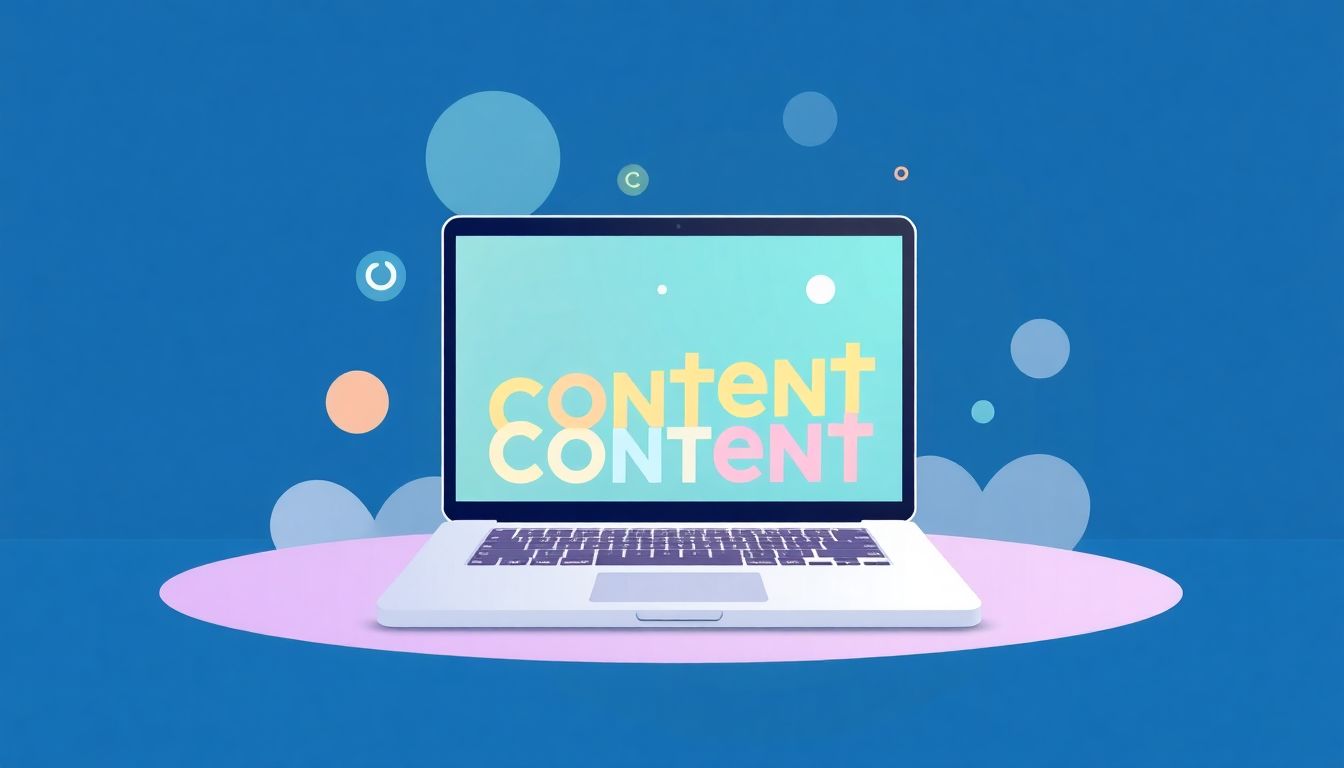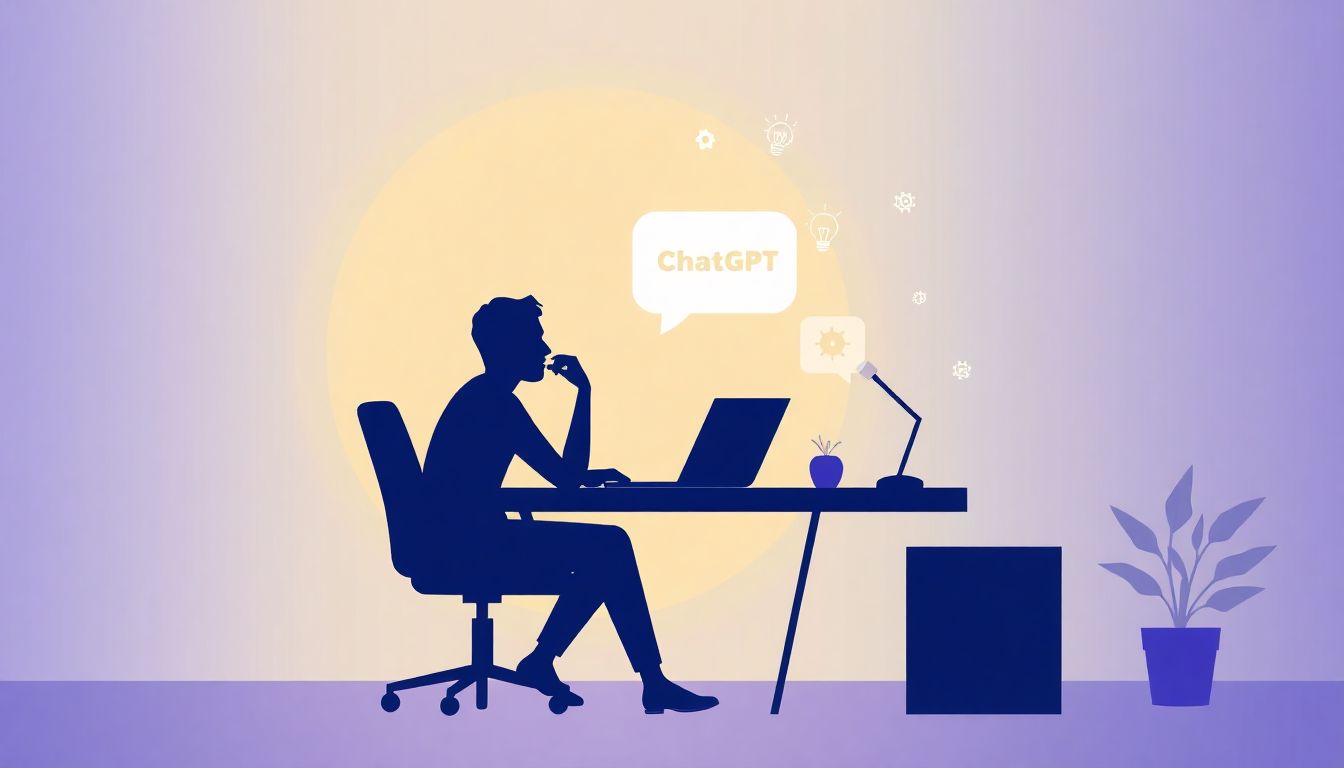Complete AI Prompt Pack
1000+ prompts • $37
Creating engaging content can feel like an uphill battle, especially when you’re juggling ideas and deadlines. Many of us struggle to consistently produce fresh, relevant material that resonates with our audience. If you’ve ever felt stuck in a creative rut or overwhelmed by content demands, you’re definitely not alone.
But what if I told you there’s a way to harness AI to supercharge your content creation process? Stick with me, and I’ll share how using ChatGPT can help you develop innovative content strategies effortlessly, freeing you up to focus on what really matters—connecting with your audience.
From generating fresh ideas to optimizing and evaluating content performance, we’ll explore practical tips and best practices along the way. Get ready to unlock the potential of AI in your content strategy!
Key Takeaways
- Identify your content goals to guide your strategy effectively.
- Use ChatGPT for brainstorming ideas, creating outlines, and generating social media content quickly.
- Take advantage of ChatGPT’s contextual understanding for more relevant content creation.
- Refine content ideas by defining your target audience and topic before using prompts.
- Optimize your content using ChatGPT’s insights for better SEO and audience engagement.
- Create engaging narratives by prompting ChatGPT for storytelling elements.
- Evaluate content performance regularly to inform future strategies and improvement.

How to Use ChatGPT for AI-Driven Content Strategies
Using ChatGPT for AI-driven content strategies is straightforward and rewarding.
Start by identifying your content goals, such as increasing traffic, improving engagement, or generating leads.
Leverage ChatGPT’s capabilities to create and optimize content efficiently.
Here are a few actionable ways to integrate ChatGPT into your content strategy:
- Use it for brainstorming sessions.
- Create outlines for articles quickly.
- Generate ideas for social media posts.
By consistently applying AI tools, you can enhance your content workflow and keep your audience engaged.
Basic Features of ChatGPT for Content Creation
ChatGPT comes with several features that make it a powerful tool for content creation.
Its natural language processing (NLP) capabilities allow it to understand and generate human-like text.
This means you can customize the user input for specific contexts, enabling more tailored outputs.
Here are some key features:
- Contextual Understanding: It can follow conversation threads and offer responses that align with prior messages.
- Content Generation: From articles to social media snippets, it can generate diverse types of content in seconds.
- User Input Customization: You can provide specific guidelines to get the type of content you need.
- Multi-platform Usability: Use ChatGPT across different formats—blogs, emails, or even chatbots.
Utilizing these features effectively will streamline your content development process.
Step-by-Step Guide to Generating Content Ideas with ChatGPT
Generating content ideas with ChatGPT can be done in a few structured steps.
First, define your target audience and topic area.
Then, use the following prompts to get the wheels turning:
- “Generate a list of 10 blog post ideas about [your topic].”
- “Help me brainstorm content ideas for [specific audience or niche].”
- “Create three catchy headlines for an article about [your topic].”
This method allows you to leverage AI for effective brainstorming.
You can build topic clusters by asking ChatGPT to link related ideas, which aids in content strategy coherence.
Lastly, don’t forget to refine and iterate on the ideas generated by discussing them further with ChatGPT.
Optimizing Your Content Based on ChatGPT Insights
Using ChatGPT to optimize content is essential for improving performance.
Start by analyzing the insights it provides from generated content drafts.
For example, you can ask:
- “What keywords should I focus on for my content about [topic]?”
- “Suggest some SEO-friendly modifications to this paragraph [insert text].”
These queries can guide you toward better SEO optimization strategies.
Using data-driven insights, you can enhance audience engagement.
Remember to personalize your content based on what resonates best with your audience, making adjustments regularly.
Utilizing A/B testing approaches to assess different variations of content can also help in determining the most effective strategies.

Creating Engaging and Relevant AI-Generated Content
Creating engaging and relevant content using ChatGPT involves a few key strategies.
First, ensure that the content aligns with your audience’s interests, needs, and emotional triggers.
Use prompts that direct ChatGPT to generate tailored content. Here are some examples:
- “Write a blog post introduction that captivates readers about [your topic].”
- “Draft a case study highlighting the benefits of [product/service] for [target audience].”
- “Create a list of 5 tips for [specific problem] that resonate with [your audience].”
Incorporate storytelling elements to make your content relatable.
Ask ChatGPT to help craft a narrative around your main points:
- “Tell a story about someone who faced [challenge] and found a solution through [your topic].”
- “Create a fictional dialogue between two characters discussing the importance of [topic].”
Make sure to maintain your brand’s voice. You can guide ChatGPT by providing input such as:
- “Write this in a friendly and casual tone about [subject].”
- “Use a professional and authoritative voice for this piece on [expert topic].”
Finally, revise the generated content to ensure it meets your standards for quality and relevance.
Best Practices for Collaborating with ChatGPT on Content
Collaborating with ChatGPT can enhance your creative process if done effectively.
Start by defining clear objectives for each task you want ChatGPT to assist with.
You might say:
- “Help me outline a blog post about [topic] with key points.”
- “Provide five engaging social media captions for [event or topic].”
Use feedback loops to refine the generated content.
After you receive an output, evaluate it and ask follow-up questions, like:
- “How can I make this paragraph more concise?”
- “Suggest improvements for stronger persuasive language in this section.”
Consider iterating on the content. If something isn’t quite right, don’t hesitate to request adjustments.
Maintaining editorial oversight is crucial.
Always review and personalize the AI-generated content to align with your brand’s message.
Combine your unique human creativity with the efficiency of AI to craft compelling pieces.
Evaluating the Performance of AI-Driven Content
Evaluating the performance of your AI-driven content is vital for ongoing improvement.
Begin by setting clear KPIs (Key Performance Indicators) for your content pieces.
Some effective metrics to track include:
- Page views and unique visitors for blog posts.
- Engagement rates (likes, shares, comments) on social media.
- Conversion rates for landing pages or call-to-action prompts.
Use analytics tools to help gather data on these performance metrics. For instance:
- “Analyze the traffic source for my blog post on [topic].”
- “Provide insights on user demographics engaging with my content.”
Collect user feedback through surveys or direct inquiries. A simple prompt could be:
- “What do you enjoy most about our content?”
- “How can we improve our articles to better serve your needs?”
This feedback can inform future content creation strategies. Adjusting and tweaking your approach based on data will help you continually refine your content strategy.

Common Challenges and Solutions in Using ChatGPT for Content
Using ChatGPT for content creation can come with its own set of challenges, but understanding them can lead to effective solutions.
One major concern is the quality of AI-generated content.
Sometimes, the output may lack depth or accuracy.
To tackle this issue, you can prompt ChatGPT with specific requests for detail.
For example, use:
- “Expand on the importance of [specific topic].”
- “Provide examples that illustrate [concept].”
Another challenge is the potential for biased text, as AI is trained on data that may contain biases.
To mitigate this, always review and edit generated content before publishing.
In terms of managing expectations, it’s crucial to remember that AI is a tool, not a replacement for human creativity.
So, you could say:
- “What unique insights can I add to this topic?”
- “How can I enhance this draft with human perspective?”
Finally, staying updated with advancements in AI is essential.
Join communities or follow relevant news to keep your skills sharp and your approach fresh.
Future Trends in AI Content Strategies with ChatGPT
The future of AI content strategies with ChatGPT promises exciting developments and trends.
One trend is the increasing personalization of content.
As algorithms evolve, they’ll be more adept at tailoring content to specific user preferences.
Consider using prompts like:
- “Generate content for a segment of users interested in [specific topic].”
- “What trends in [industry] should I consider for personalized marketing?”
Also, the integration of AI with other emerging technologies, such as augmented reality and virtual reality, is on the rise.
Content creation could soon include immersive experiences that engage users on a deeper level.
Moreover, ethical considerations will continue to play a crucial role.
As AI tools like ChatGPT gain traction, discussions around copyright, content ownership, and data privacy will intensify.
Stay informed by asking ChatGPT questions such as:
- “What ethical guidelines should I consider when using AI for content creation?”
- “How do I ensure my AI content doesn’t infringe on copyright?”
Lastly, cross-platform content strategies will become integral.
Leveraging various platforms can amplify content reach and impact.
This requires staying adaptable and evolving your content strategies continuously.
FAQs
ChatGPT can enhance your content strategy by providing data-driven insights, generating diverse content ideas, and automating repetitive tasks, allowing for a more efficient and innovative content creation process.
Best practices include setting clear objectives, providing detailed prompts, regularly evaluating output quality, and utilizing ChatGPT for brainstorming while ensuring human oversight to maintain content relevance and authenticity.
Challenges include generating contextually relevant content, potential biases in the AI’s output, maintaining uniqueness, and ensuring that the tone aligns with your brand voice, requiring human intervention for quality assurance.
Evaluate performance through metrics such as engagement rates, conversion rates, user feedback, and SEO ranking. Analyzing these factors helps identify areas for improvement and guides future content strategies.
Last updated: March 11, 2025
